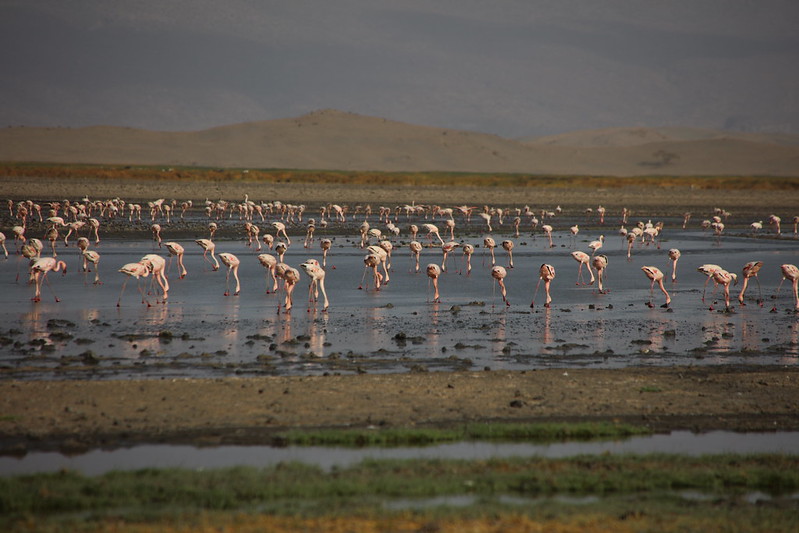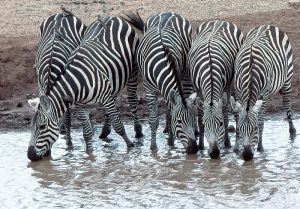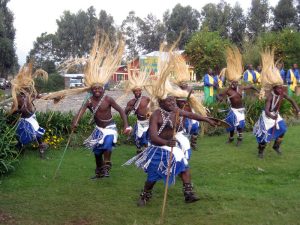Lake Natron
Some places on the planet don’t seem to be of our world. They present landscapes so unfamiliar one would imagine they had landed on Mars… or perhaps with the otherworldly colors and atmosphere of Jupiter. What to do on Lake Natron.
Welcome to the eerie, steamy, noxious, cauldron of Lake Natron in northern Tanzania. The waters here are so alkaline, the temperature so scalding that mammals, fish, and birds keep their distance.
The caustic brew of this lake is so toxic that any wildlife unfortunate enough to fall into the lake’s septic stew won’t last more than a few minutes.
Yet, this very same spot is a thriving preserve for much of the world’s lesser flamingoes. In this hellscape for the rest of the world’s wildlife, millions of bright pink flamingoes breed and thrive on the salt flats dotting the lake’s shallows. It’s their version of heaven.
How Can They Survive and Thrive?
As mentioned, the lake’s highly toxic brine is extremely alkaline in composition, almost the same as ammonia. Its temperatures can rise to a searing 600 C (1400 F). And therein lies a secret.
The lake’s highly alkaline composition is like a super-food for the unique microorganisms that flourish under these conditions. Creating photosynthesis as plants everywhere do, but here they churn out a red pigment.
This unusual coloring gives the lake its unearthly red and orange hues. One of these microorganisms is called Spirulina, which you may have heard of as it’s used as a food supplement.
It turns out that spirulina is also a favorite of the lesser flamingo, who consider it an important part of their daily diet. They consume so much of this red microorganism, that the rosy hue passes into the birds’ feathers, coloring them the attractive pink that is their signature color.
Lake Natron’s nutrients are so rich and available to the birds that up to 75% of all the lesser flamingoes in the world make this forbidding spot their home. And because the area is so otherwise desolate, the birds are protected from natural predators as they nest and feed on the small salt islands or “rafts” scattered around the lake.
However, even though their numbers are quite stunning at this one site, the flamingoes are still considered a “threatened” species as they are dependent on the lake.

More Tales of The Bizarre
The strange otherwise toxic realities of the lake make for some odd occurrences. While the flamingoes proliferate here other species have not been so lucky. Occasionally, an unfortunate bird or small animal has flown or wandered into the lake’s chemical soup.
The combination of Natron’s saline nature combined with its high temperatures usually produces fatal results for the unsuspecting. Not only does the erring mammal or bird quickly succumb but sometimes in the dry season when the lake shrinks, the remains are found, seemingly calcified… turned to stone.
Experience Our Africa
Take a pause from your northern Tanzania safari to discover the raw colorful beauty of Lake Natron and its feathery complement of millions of pink flamingoes. Experience some of Africa’s hidden and unusual delights off the beaten trail as Abunda Discoveries Uganda shows off our special and unique Africa.




